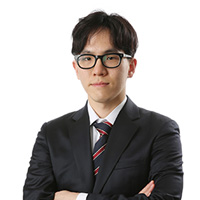The Cheongju branch is housed in a five-story building that was a tobacco factory built in 1946. The factory produced an annual average of some 10 billion cigarettes until it ceased operations in 2004.

The site was later acquired by the city government for 35 billion won ($31 million). Some 58 billion won has been injected into the project to open the museum’s new branch, as well as the surrounding cultural facilities, in the region.
The Cheongju branch, equipped with storage capacity for some 11,000 artworks, is designed to both store and display the MMCA’s collection.
On Dec. 13, the museum started to transfer part of its modern and contemporary art collections, which amount to some 8,200 pieces.
It plans on moving a total of some 4,000 artworks from the MMCA’s collection to the newly opened storage area in Cheongju by 2020, the largest-ever movement of artworks here.
The Cheongju branch is to hold some 1,100 works from the Art Bank, a MMCA subsidiary established in February 2005 to support the local art market.
The branch will also specialize in maintenance, conservation and restoration of artworks, as well as a site where specialists and curators can receive first-hand research opportunities.

The MMCA Cheongju branch has secured around 10 experts specializing in conservation and restoration of artworks, according to the museum. It will continue discussing with the central government to secure the number of specialists required, it said.
Located on the third floor of the building are diagnostic laboratories for artwork conservation and restoration. The diagnostic processes are fully open to public view, offering a glimpse into how artworks are treated.
As making the art museum relatable is a major priority for the MMCA’s Cheongju branch, it has endeavored to have open art storage spaces.
Visitors have full access to the open storage rooms on the first and the third floors, where relatively more temperature and humidity resistant artworks are located. People are allowed to walk around the open storage rooms and through artworks set up on shelves and on the floor.

There are currently a total of some 250 artworks, including sculptures, photographs, video installations, located in the two open storage rooms. The items displayed will be changed periodically to allow more works to be viewed by the public, according to officials at the museum.
However, 250 artworks account for only about 3 percent of the total number of items in its collection. In terms of the number of works available to the public, access still appears relatively limited.
Works in the visible storage rooms, which make up a big proportion of the museum’s collection, are not open to the public. Only a limited number of artworks in the visible storage room are available for viewing through a large window.
The MMCA’s Cheongju branch is in line with the trend of moving artworks previously cramped in storage areas to art storage rooms that can be viewed by the public. Many museums in the US and the Europe have been adopting this system over the past decades.
In particular, the MMCA Cheongju is modeled after the Schaulager, a museum in Newmunchenstein, a sub-district of Munchenstein in the canton of Basel-Country, Switzerland, according to the museum.

Meanwhile, the MMCA Cheongju is holding its inaugural exhibition on the fifth floor featuring contemporary artworks from its collection. The exhibition runs through June 16 next year.
By Shim Woo-hyun (ws@heraldcorp.com)


















